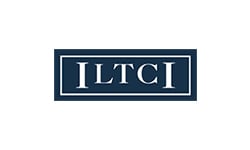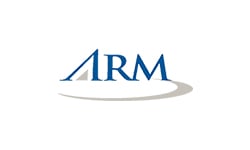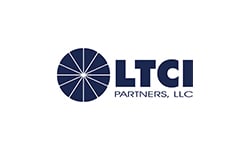By Chris Orestis
INTRODUCTION
The costs of long-term care are increasing every year, but most families and advisors do not understand what they will be confronting when it is time to start paying for care. Too many people wait until they are in the middle of a crisis before they start trying to figure out how the world of long-term care works. Long-term care is a topic people don’t want to discuss, yet it’s a very expensive proposition. Families can go broke quickly trying to provide for a loved one.
Compounding this problem, is that most people don’t know what is, and what is not covered between public and private pay. And, most certainly don’t understand alternative private pay funding options such as life settlements, reverse mortgages, and the VA Aid and Attendance Benefit; or the growing array of combo long-term care, annuity and life insurance products.
Today, one of the fastest growing areas of funding long-term care is in “crisis management”. There are “point-of-need” tools available to families that can help pay for the costs of care at the time that it is needed. One tool that is becoming more prevalent, is using a life settlements with an in-force life insurance policy to access funds that can be used to pay for the costs of senior retirement living and long-term care.
LTC-HSA
For those needing to pay for expensive medical or long-term care costs, a life settlement can provide tax-free lump sum cash and/or can be used to fund a Long-Term Care Benefit Account. This is a specific bank-trust account set up to hold and administer the funds from the policy settlement for care. As soon as the account is funded, it can begin making monthly payments towards any form of senior living and long-term care services the owner wants.
All care options can be covered, including home care, assisted living, skilled nursing care, memory care and even hospice. But, this is not a long-term care insurance policy and it is not issued by aninsurance company. It is more like a LTC-HSA (Health Saving Account) funded exclusively by the settlement proceeds to be used for care.
Like an HSA, the Benefit Account is held and administered by a federally chartered and FDIC insured bank. It is a no-fee, non-interest bearing irrevocable bank-trust account. There are no waiting periods and no claims to file; the account is ready to start making payments towards care as soon it is funded by a life settlements.
The account is flexible, so payments can start at a designated amount for any form of care a person needs, and then can be adjusted to meet changing care needs. There is a final expense cash benefit with the account, or if the insured passes away before the funds in the account are spent-down, any remaining balance will transfer to the named account beneficiaries tax-free if they are below the estate tax threshold.
Because the account is funded by the secondary market value of the policy and then used exclusively for medical and long-term care expenses, it is both tax-free and considered a Medicaid qualified spend-down of the funds. This keeps the person private pay for as long as there are funds in the account, but once depleted they could make a seamless transition over to Medicaid.
POLITICAL SUPPORT
In the summer of 2017, the National Association of Insurance Commissioners (NAIC) released the policy paper, “Private Market Options for Financing Long-Term Care”, and in it endorsed the life insurance secondary market as an innovative option to help people pay for long-term care. This was a watershed moment for the life insurance industry, and people in need of financial resources for long-term care. The paper was another important step in the mainstreaming of the secondary life settlement marketplace, right at a time when the senior population and demand for long-term care services is growing at explosive levels.
A MULTI-BILLION DOLLAR MARKET
Today, there are less than 8 million in-force long-term care insurance policies in the United States. By comparison, there are over 150 million in-force life insurance policies with over $12 trillion of death benefit on the books today. Of this massive asset pool:
Seniors own $230 billion of death benefit that could potentially qualify to be exchanged in the secondary market for life settlements value on an annual basis.
The challenge is that 9 out of 10 life insurance policies ultimately won’t remain in-force to pay a death benefit because they will be needlessly lapsed or surrendered by the owner. Seniors in particular are most vulnerable to this dilemma. For many, after years of premium payments, they decide they no longer need or can no longer afford to keep the policy, or they abandon their policy as part of their Medicaid planning spend-down requirements.
The good news is that for seniors who own life insurance policies, a solution to their financial woes is in their hands. Accessing the secondary market has never been easier, or more readily available to consumers than it is today. The regulatory environment is not only solidly in place across most of the country, but as evidenced by the NAIC paper, regulators and political leaders have come to look upon settlements as a long-term care funding solution with favor.
Moreover, with such a large pool of in-force life insurance policies owned by seniors, there are literally billions of dollars available to fund retirement and long-term care costs. The opportunity for advisors is that these policy owners are sitting on the sidelines every year just waiting for the information and guidance to tap into the secondary market value of their asset.
CONSUMER AWARENESS EXPLODES
Consumer awareness about life settlements continues to grow as the transaction becomes more mainstream. Driven by TV commercials, media attention, and more understanding and acceptance by insurance and financial advisors, the number of settlements transacted is increasing annually.
In 2018, there were $3.8 billion of life settlements transacted—a 28% increase over the prior year.
Also, more advisors are understanding that a life insurance policy is legally recognized as personal property of the owner, and that withholding information about secondary market options from a policy owner opens up the risk of possible legal liability.
As precedent setting legal actions mount across the county in the matter of disclosure versus concealment of information about the secondary market value of life insurance policies, more and more advisors are adding this information to their practice as both a smart business practice, and as a hedge against potential legal and financial liability.
Growth in life settlements will be fueled by the combination of growing consumer awareness, advisor adoption, a favorable tax and regulatory environment, and the financial challenges confronting an aging Baby Boom population. This will help seniors tap into billions of dollars of available liquidity coming out of an asset they already own—instead of throwing it away.
CONCLUSION
Life settlements have evolved over the last decade into a mainstream tool to help seniors pay for retirement and long-term care. Public awareness, and interest is at an all-time high.
Advisors offering solutions to seniors to meet the financial challenges of senior living and long-term care are adding life settlements to their practice. It is an opportunity to help seniors obtain the maximum market value from an asset they already own, but are in danger of abandoning for little to no value in return. There are tax-advantages and fiduciary obligations that well-informed advisors understand to the benefit of their clients.
Life settlements are a smart tool to add to your toolbox that can not only help families you are working with, but it can also add a new revenue stream to your practice.
 CHRIS ORESTIS
CHRIS ORESTIS
Chris is an over 23-year veteran of both the insurance and long-term care industries, a nationally known senior care advocate, acknowledged expert on insurance and long-term care issues, a former lobbyist and political expert, and very well known in the world of life/health insurance brokerage distribution. He was named Executive Vice President of GWG Life in 2017, after the merger of Life Care Funding where he was the Founder and CEO since 2007.















-CMYK.png?width=250&name=LifeSecureLogo(F)-CMYK.png)



.png?width=860&height=245&name=Full%20Color%20Krause%20Group%20Horizontal%20(002).png)


